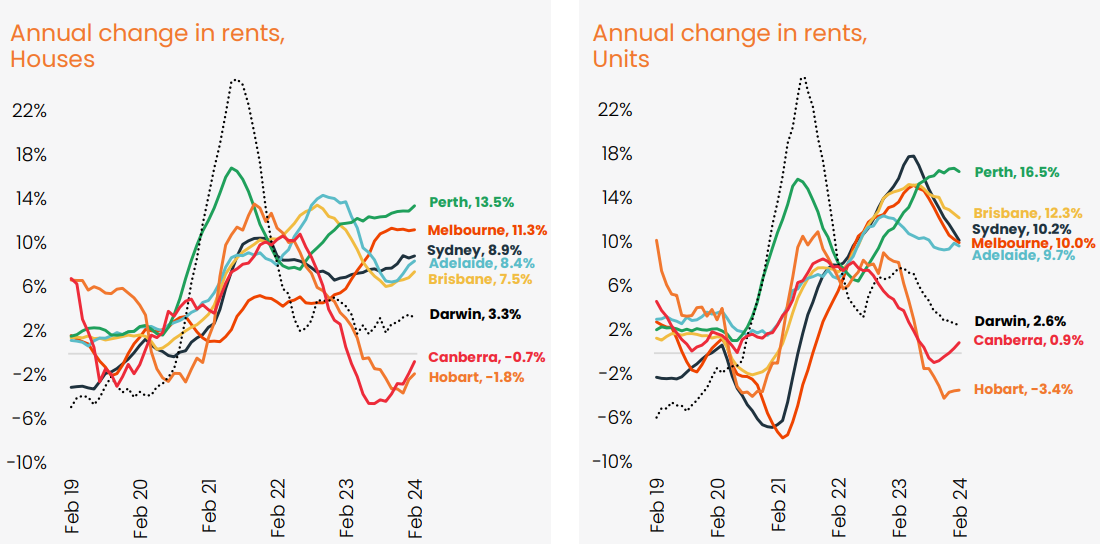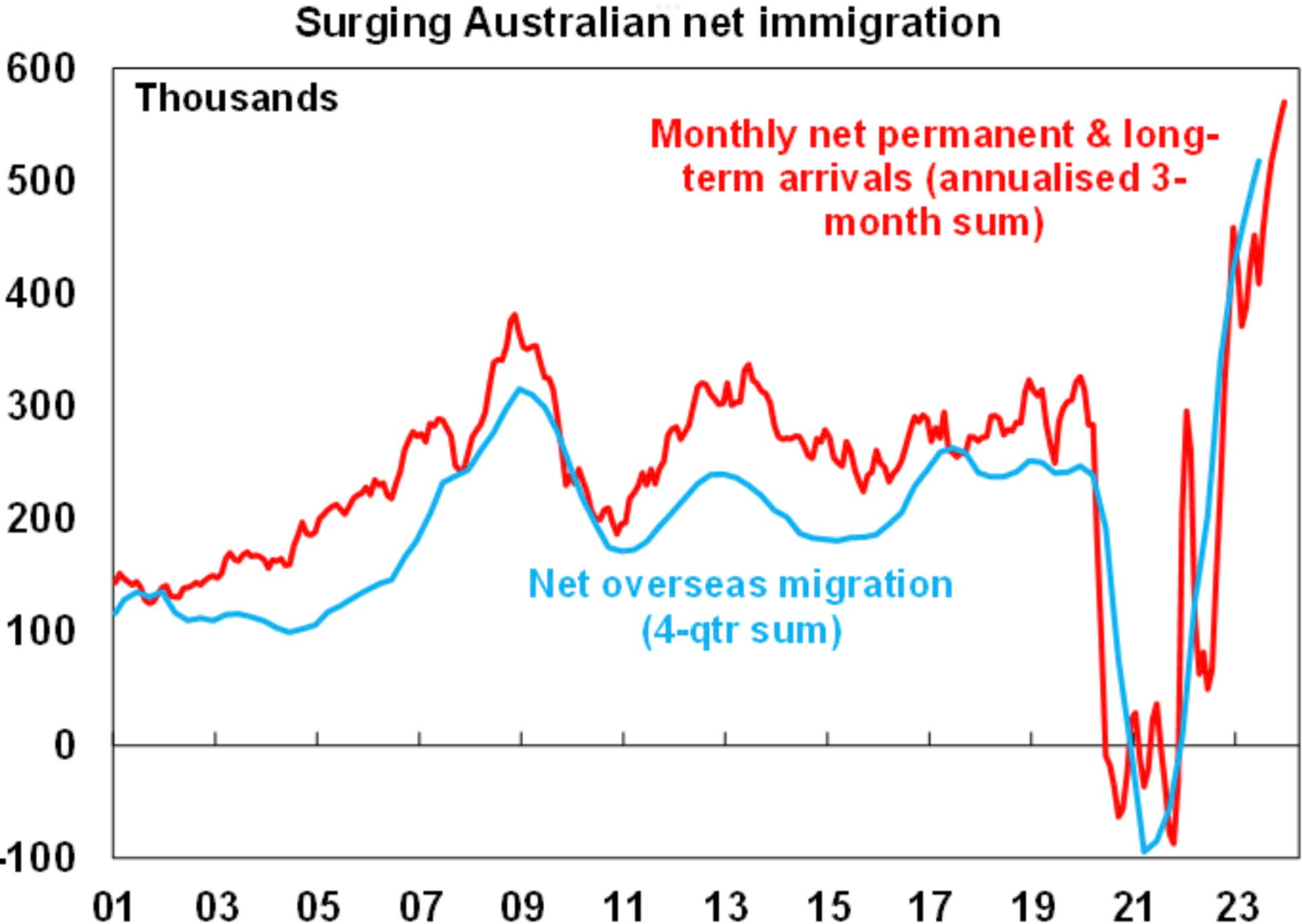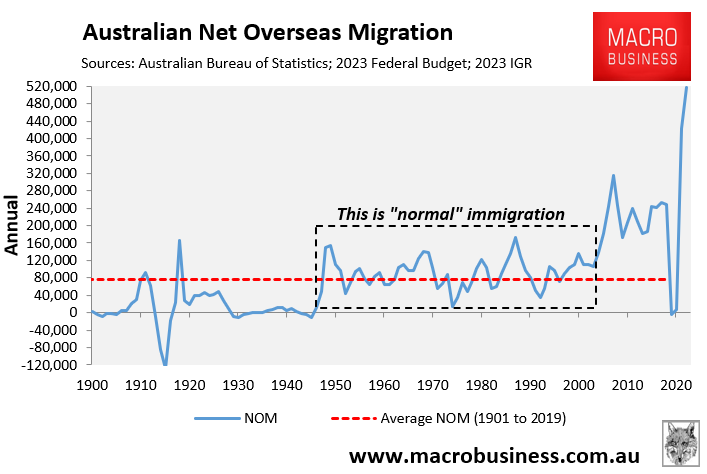CoreLogic reported that Australian rental growth re-accelerated in February, with the monthly rate of change rising to 0.9%, the highest reading since March last year.
This re-acceleration also saw the rolling quarterly change in rents rise to 2.4%, the highest since May last year.

Source: CoreLogic
As shown above, Perth leads rental growth across both houses and apartments, although growth remains strong across each of the five major capital city markets.
While the re-acceleration in rents is partly a seasonal phenomenon, with the first quarter of the year historically showing an accelerating trend.
However, CoreLogic notes that there has also been a pick-up in the annual growth trend for rents, with the national rental index up from a recent low of 8.1% in October last year to 8.5% over the 12 months ending February.
Houses are driving this re-acceleration rental rates. Annual rental growth in houses has been trending higher since October last year.
By contrast, unit rents are trending in the opposite direction, receding from a recent peak in April last year, when unit rents increased by 14.0%. Since then, annual growth in unit rents has slowed to 9.6%.
“Although growth in unit rents is slowing, we are still seeing the cost of renting across the unit sector rising at a faster rate than houses across most jurisdictions”, CoreLogic research director Tim Lawless said.
“A slowing in the pace of unit rents lines up with the peak in net overseas migration in the first quarter of 2023″.
“However worsening affordability pressures could be another factor in this sector, given unit rents have surged 24.1% higher over the past two years compared with a 16.6% increase in house rents”.
The latest permanent and long-term arrivals data from the Australian Bureau of Statistics (ABS) suggested that net overseas migration hit a new peak late last year:

Source: Shane Oliver (AMP)
At the same time, forward-looking indicators of housing supply have collapsed to decade lows:

With population demand certain to continue to outpace housing supply, Australia’s rental crisis will deteriorate over the foreseeable future.
The number one solution to Australia’s rental crisis is for the Albanese government to abandon its Big Australia mass immigration policy in favour of historical levels of net overseas migration below 120,000 a year:

Australia’s population must grow at a rate below the nation’s ability to supply housing and infrastructure.
Otherwise, the rental crisis will become permanent.

